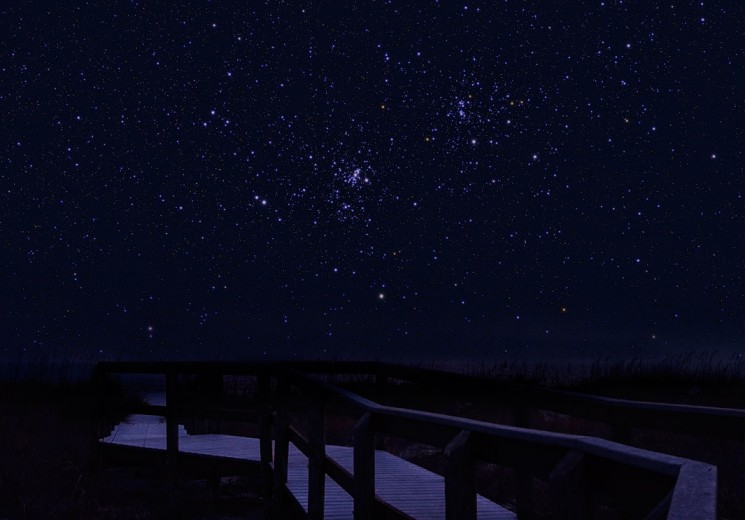
|
Credit & Copyright: Jose Suro
Explanation:
Located some 7,000 light-years away toward the constellation
Perseus, this pair of open
or galactic star clusters really
is visible to the unaided eye and was cataloged in 130 BC
by Greek astronomer Hipparchus.
Now known as
h and
chi Persei (NGC 869/884), the clusters
themselves are separated by a few hundred light-years and
contain stars much younger, and hotter than the Sun.
But what if this famous double star cluster were closer,
say only 700 light-years distant from our fair solar system,
crowding our sky with stars?
Astrophotographer Jose Suro also imagines a
clear, moonless,
dark night sky on a warm evening near tranquil waters.
The foreground is illuminated by starlight in
his composited dreamlike image of the cluster pair.
He notes that while the solar system is not in the
vicinity of such rich clusters of stars,
dark night skies
and warm evenings
can
still be inspiring
on planet Earth.
|
January February March April May June July August September October November December |
| ||||||||||||||||||||||||||||||||||||||||||||||||
NASA Web Site Statements, Warnings, and Disclaimers
NASA Official: Jay Norris. Specific rights apply.
A service of: LHEA at NASA / GSFC
& Michigan Tech. U.
Based on Astronomy Picture
Of the Day
Publications with keywords: star cluster - galactic cluster
Publications with words: star cluster - galactic cluster
See also:
